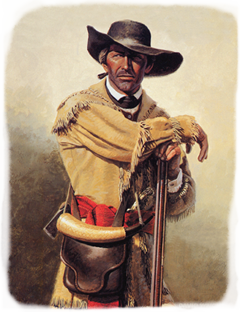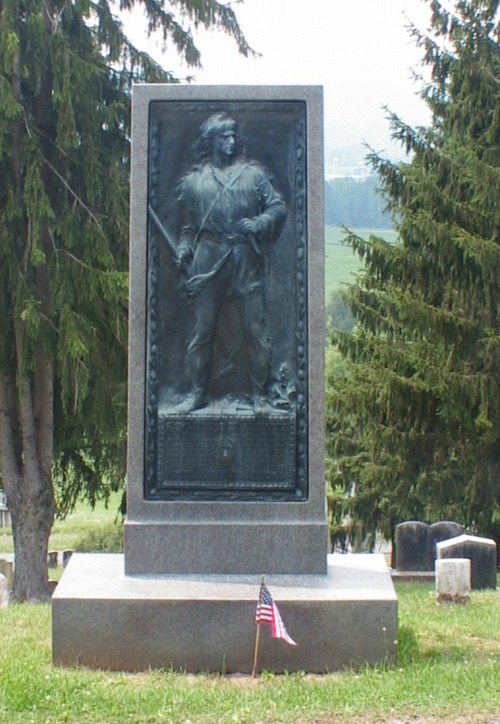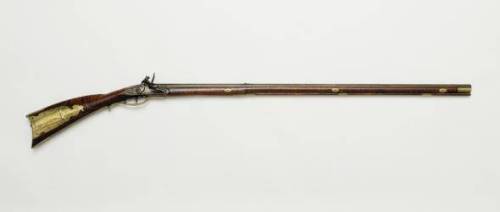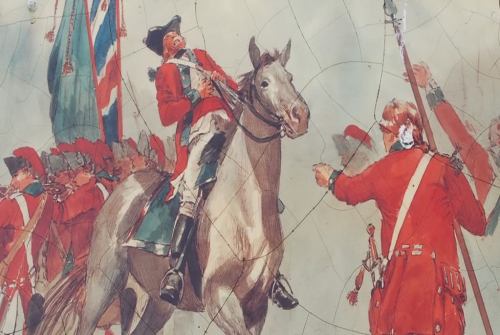peashooter85:Sgt. Timothy Murphy, the Forgotten Sniper,A challenge for those interested in military
peashooter85:Sgt. Timothy Murphy, the Forgotten Sniper,A challenge for those interested in military history; name some of the most important snipers in world history. I would not be surprised if you created a list similar to this; Simo Haya (Finland, WWII), Vasily Zaytsev (USSR, WWII), Lyudmilla Pavelichank (USSR, WWII), Carlos Hathcock (USA, Vietnam War), Chris Kyle (USA, Iraq), and of course perhaps other famous snipers who made record numbers of kills or exceptionally long shots. However there is one sniper from the earliest days of sniping who deserves to be remembered for his contribution to history, for it was at the Battle of Saratoga during the American Revolution that Murphy would make a shot that would change the world.Not much is known about Timothy Murphy. Originally born to Irish immigrants near Sunbury, Pennsylvania, Murphy made a living in Wyoming County, PA as an accomplished frontiersman. In 1775 he enlisted with the Northumberland Co. Rifleman, fighting at the Siege of Boston, the Battle of Long Island, and the subsequent retreat to New Jersey. In July of 1777 Murphy was promoted to the rank of sergeant and declared an expert marksman. To be an expert marksman a shooter had to be able to hit a seven inch diameter target at 250 yards, no easy task with the flintlock rifles available at the time.Because of his skill with the rifle Murphy was recruited by Gen. Daniel Morgan to be part of his elite sharpshooter corps. The predecessor to the sniper, Colonial Era sharpshooters were specialized soldiers with incredible skills in marksmanship and wilderness survival. Mostly hardy frontiersmen, they were tough, independent, self sufficient, and comfortable operating in the American wilderness. Most importantly they were armed with the legendary Pennsylvania Long Rifle (pictured above), a weapon crafted by German immigrants living in Southeastern, PA which had superior accuracy and range to the common military musket of the era. A favorite weapon of frontiersman, it could accurately shoot up to 300 yards or more. While this is nothing compared to modern rifles which can accurately hit a target at hundreds or even thousands of yards away, in 1777 the long rifle was the most accurate firearm in the world.Armed with their PA long rifles, Daniel Morgan’s sharpshooters specialized in guerrilla warfare, surprise attacks, and the long range killing of key officers during battle. In 1777 the British Gen. John Burgoyne led an army of 7,200 men from Quebec down through New York with the goal of combining forces with the army of Sir Henry Clinton from Long Island. If the two armies combined they would become unstoppable, certainly powerful enough to end the Revolution.To stop them the Continental Army sent Gen. Horatio Gates, Gen. Benedict Arnold, and the popular Col. Daniel Morgan. Morgan and his sharpshooters played a key role during the Saratoga Campaign, organizing surprise attacks, raiding enemy supply lines, and slowing the British advance. However it was at the Battle of Beemis Heights that Morgan’s Men, and Timothy Murphy, would have their names written into the history books.On October 7th Burgoyne’s forces attacked Beemis Heights, a heavily fortified position held by the Continental Army. Leading the attack was Burgoyne’s second in command, Gen. Simon Fraser, a commander known for his brilliant leadership and who was well loved by his men. Fraser was described by Benedict Arnold as being worth a regiment of soldiers alone. After seeing Fraser on the battlefield, Arnold ordered Morgan to take him down.Morgan turned to Timothy Murphy to take the shot, saying, “That gallant officer is General Fraser. I admire him, but it is necessary that he should die, do your duty.” Murphy climbed a tree and lined his sights with the general who was over 300 yards away, an extreme distance for a rifle at the time. Murphy’s first shot was a close miss. Handing off his empty rifle for a loaded one, his second shot grazed Gen. Fraser’s horse. His third shot found its mark, striking Gen. Fraser in the stomach. Mortally wounded, Gen. Simon Fraser died later that night. With a fourth shot Murphy also killed Sir Francis Clerk, Gen. Burgoyne’s personal aide who was busy transporting messages and orders to the army.The death of Gen. Fraser dealt a mighty blow to the British at Saratoga. Without his leadership the British Army fell into confusion and chaos. The loss of such a well loved and respected leader also severely dimmed the morale of the British. Over the next two weeks the British assault failed and the Continental Army gained the upper hand and struck back. Ten days later Burgoyne and his army surrendered, leading to one of the most important American victories during the Revolution. Burgoyne’s advance was ended, thousands of British troops had surrendered, and the Revolution was saved.More importantly the American victory at Saratoga convinced the French to ally with the Colonies. Today it is a myth that the French contributed little to the cause until the end of the war, in fact without French aid the Revolution probably would have died swiftly and tragically. During the Revolution the French would supply 75% of the gunpowder used by the Continental Army, as well as thousands of muskets, scores of cannon, and 1.3 billion livres of financial aid (about $30 billion today). By 1799 3,000 French soldiers were loaned to the Continental Army on detached duty. Another 6,000 would land at Rhode Island in 1780, posing a serious threat to Sir Henry Clinton’s rear. French forces raided and attacked British outposts all over the world, and the threat of an invasion of Britain forced the British to recall some of their best soldiers. In September of 1781 the French fleet and the Continental Army would trap Gen. Cornwallis and his army at Yorktown, ending the war and forcing the British to recognize American independence.Not much more is known about the life of Timothy Murphy after the American Revolution. He died in 1818. Today his grave, located at Middleburgh, New York, is marked by a large bronze bas-relief plaque in remembrance of his historical shot. -- source link
Tumblr Blog : peashooter85.tumblr.com



